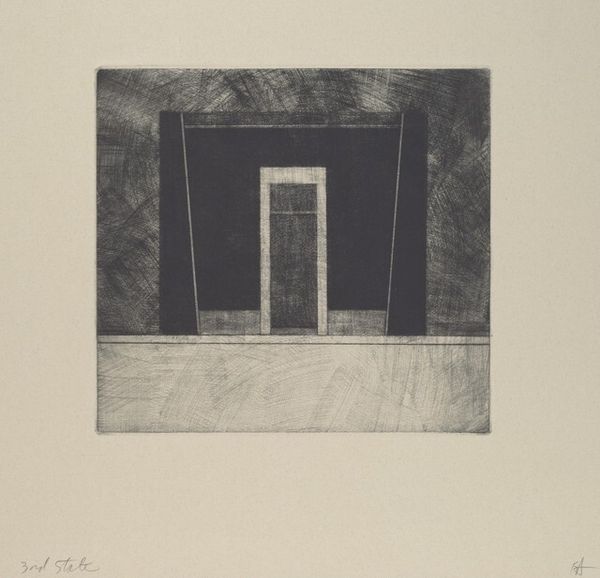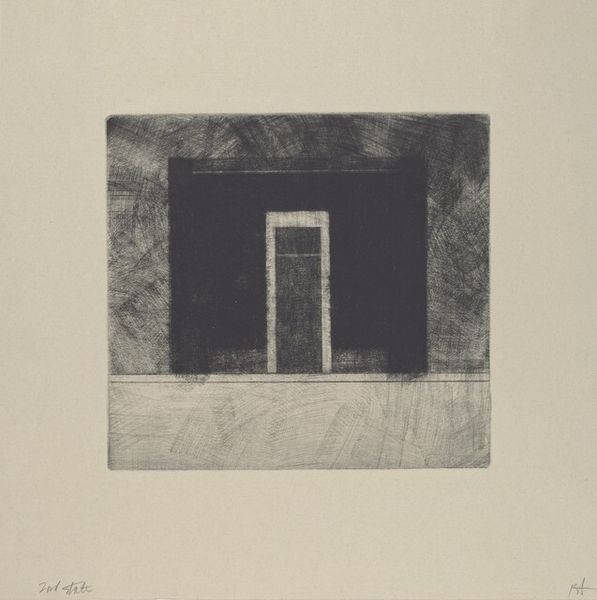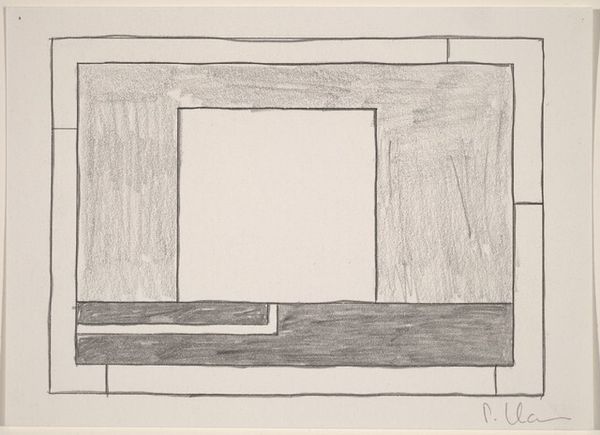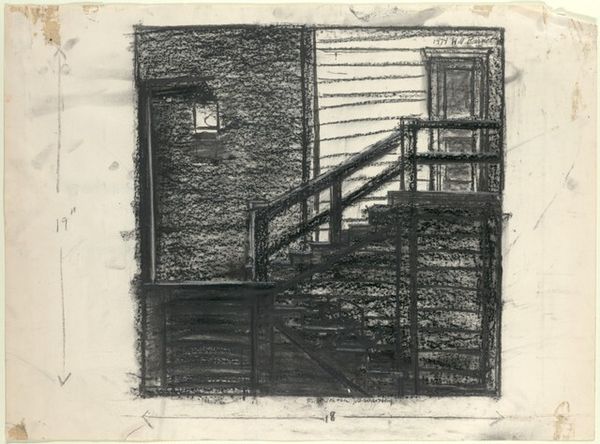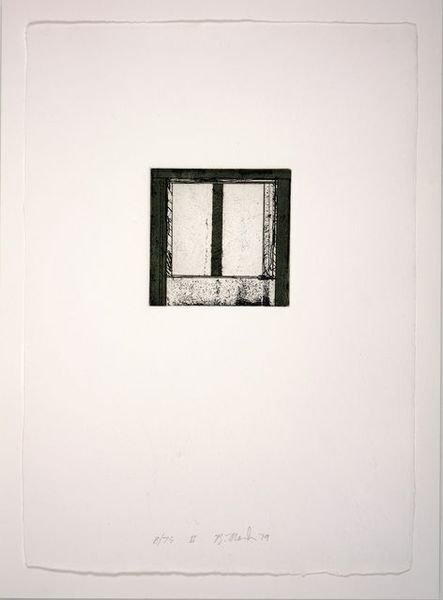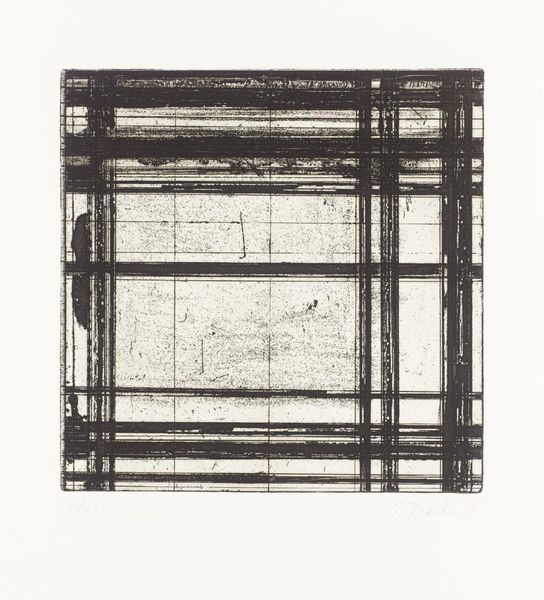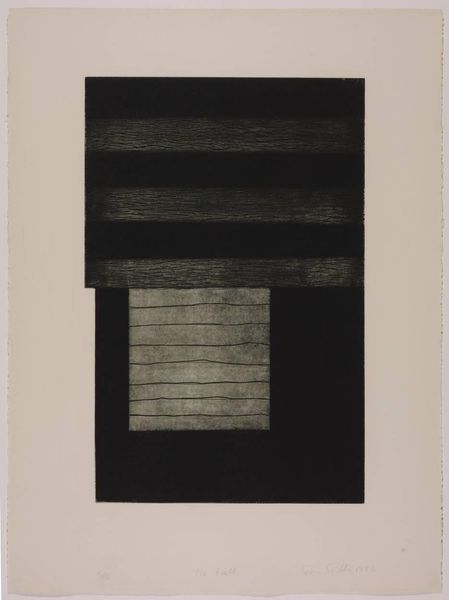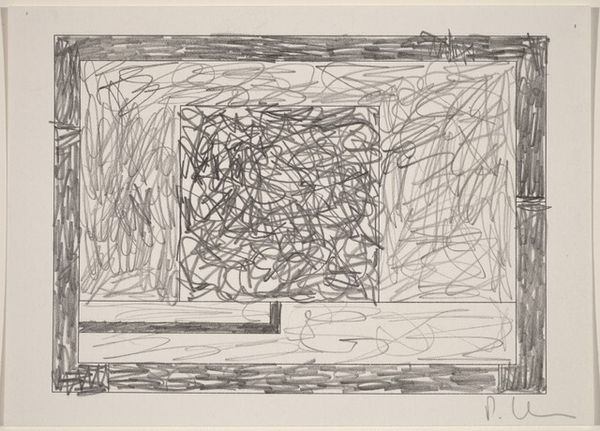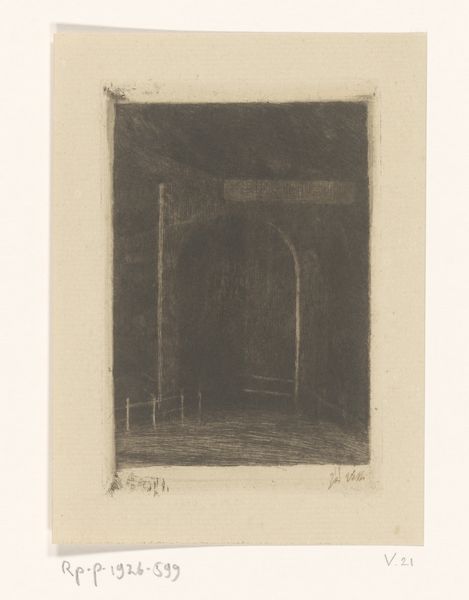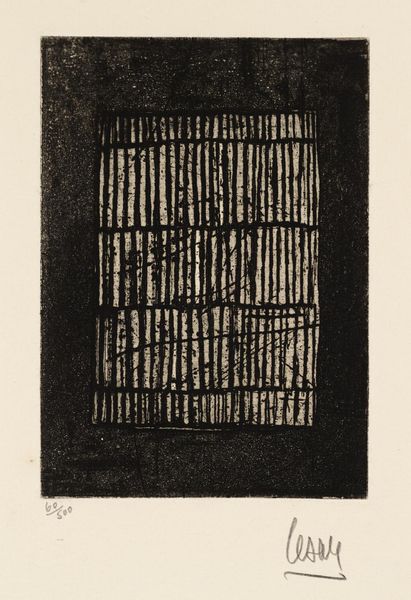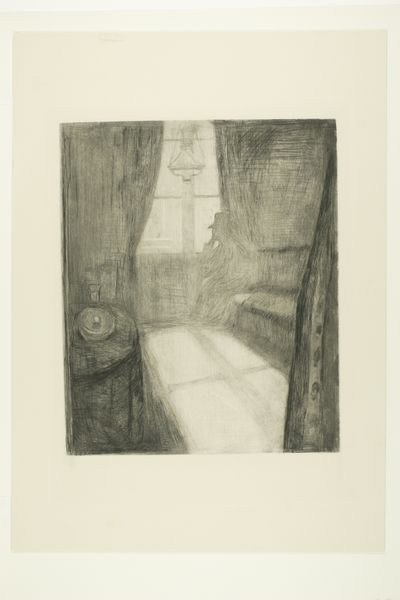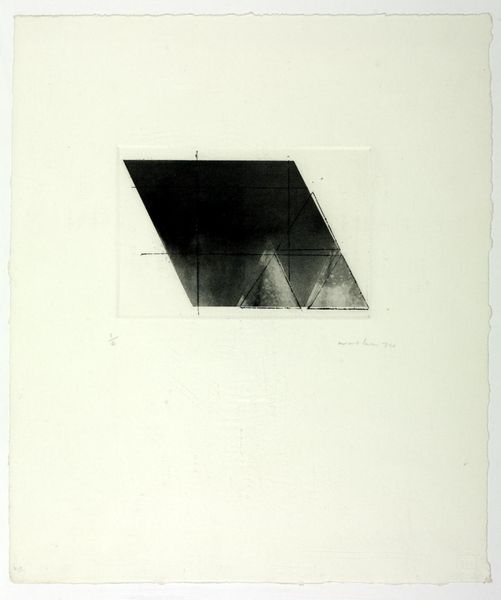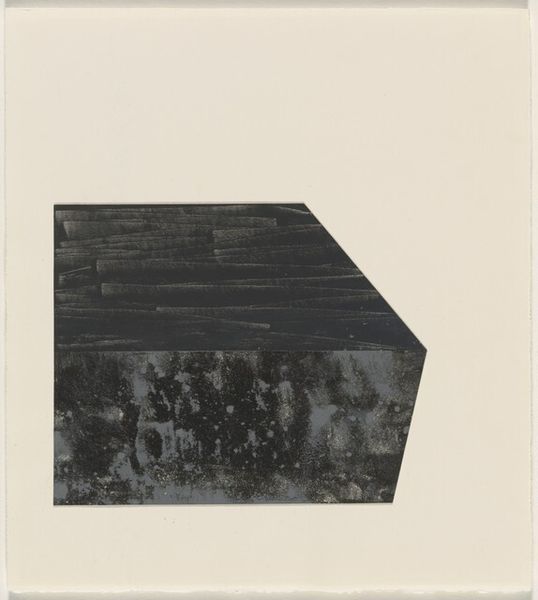
print, intaglio
# print
#
intaglio
#
form
#
geometric
#
abstraction
#
line
Copyright: National Gallery of Art: CC0 1.0
Editor: Here we have Keith Anden Achepohl’s “Mura V,” an intaglio print from 1978. The composition feels so stark, almost like a blueprint. What do you see in this piece, particularly in its seemingly simple geometric forms? Curator: I see a critical engagement with architectural space, particularly in relation to confinement and access. Achepohl, working in the late 70s, presents a visual language that mirrors the austerity of minimalist architecture. But, through the printmaking process, he introduces a level of human imperfection that’s key. Editor: Imperfection? Curator: Look at the textures. The way the intaglio creates depth, these nuances hint at the human hand, resisting the cold perfection often associated with Modernism. Consider how this piece speaks to structures of power – who gets to access certain spaces, who is excluded. The doorway is almost a false promise, given the barriers. What is it barring from or allowing to enter? Editor: It’s interesting to consider the piece as less about pure form and more about social commentary embedded within architectural representation. Curator: Exactly! This is where art history intersects with contemporary social issues. Can we truly appreciate abstract art without acknowledging how our personal experiences inform perception? Can we read a door simply as line and form, or is there a deeper sociological story at play? Editor: That’s a powerful perspective. I was so focused on the lines and shapes, but I’m starting to see that “Mura V” is much more than meets the eye, like a quiet protest in monochrome. Curator: Precisely, a work where abstraction itself becomes a vehicle for exploring power structures. Hopefully we can reflect on how those structures inform and interact within art still today.
Comments
No comments
Be the first to comment and join the conversation on the ultimate creative platform.
